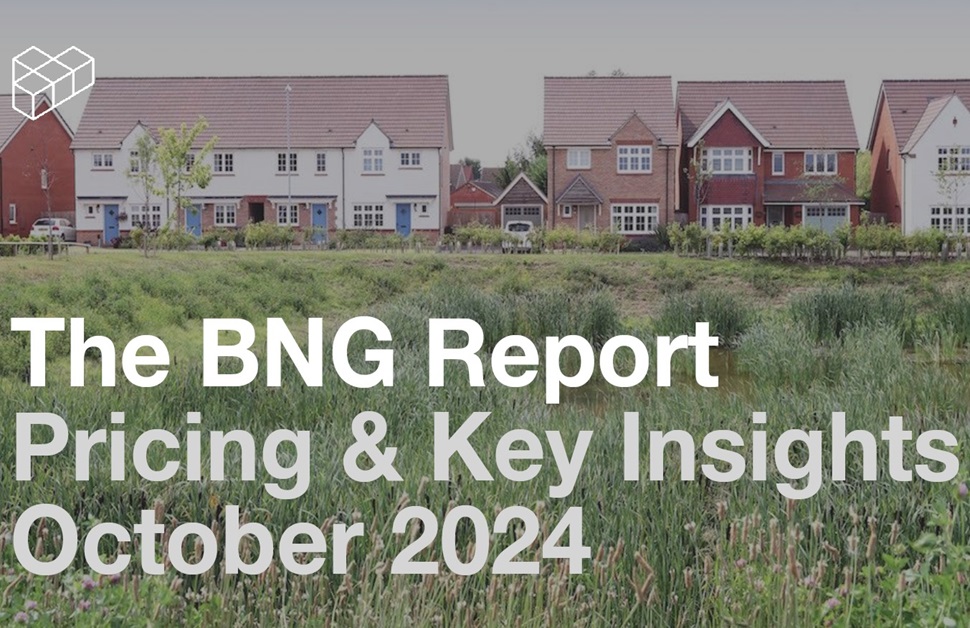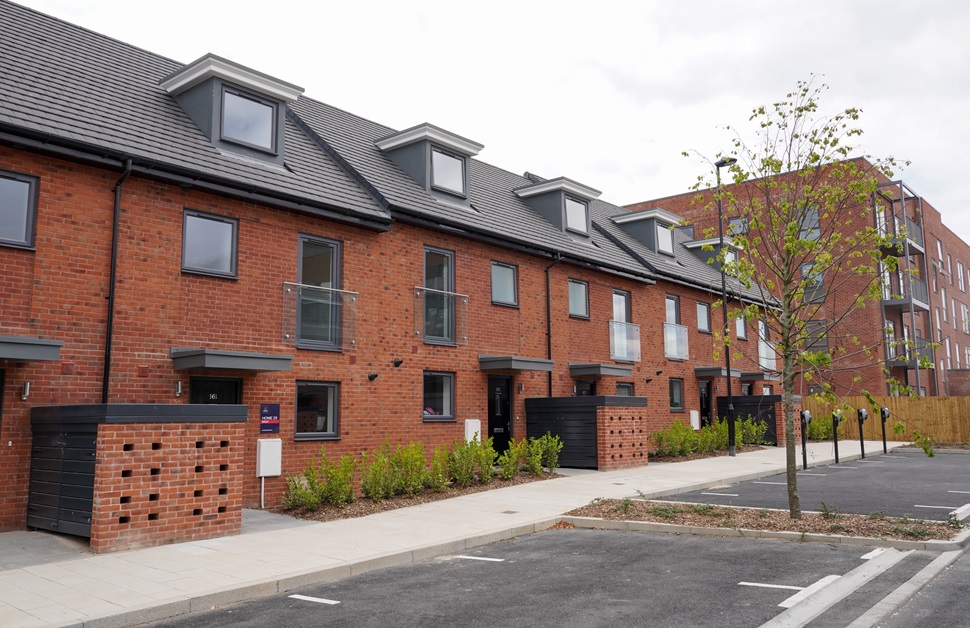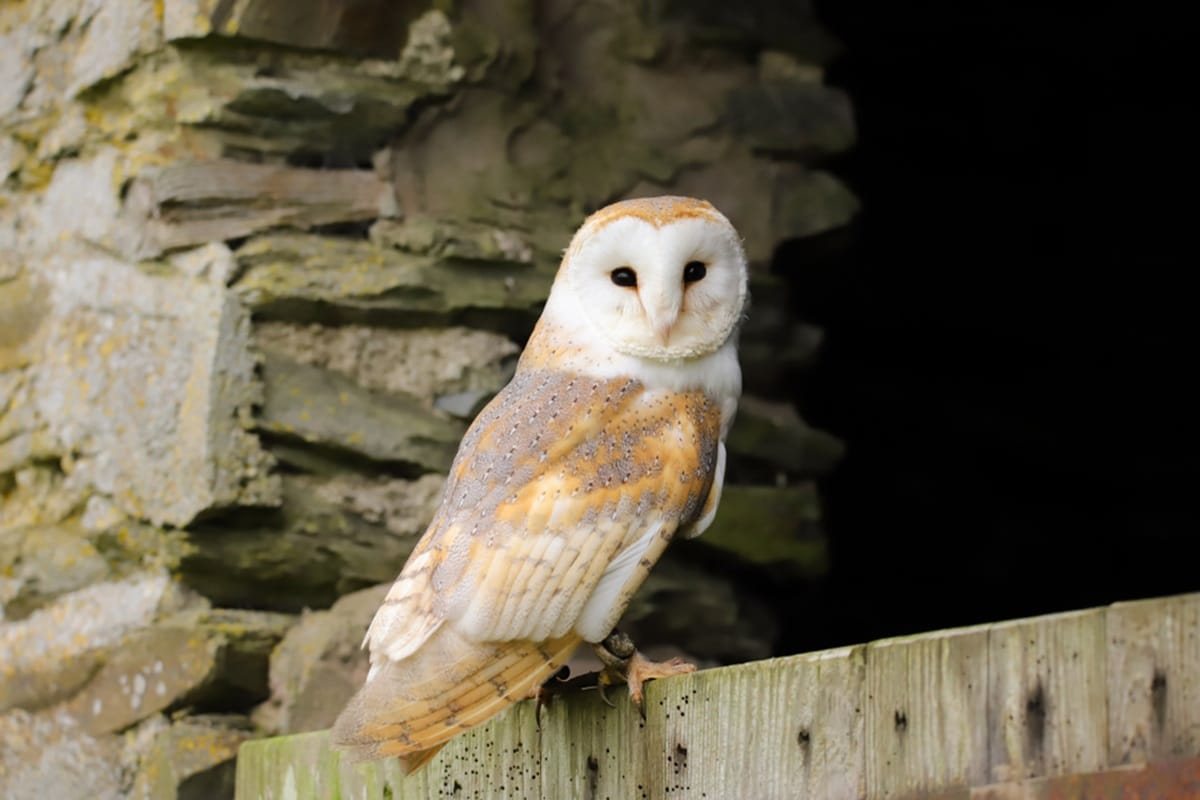
BNG Units Explained
With the country pushing forward with mandatory biodiversity net gain (BNG), developers are now lawfully obligated to enhance the natural capital of the local environment whenever the planning policy applies. It was originally intended for the incoming biodiversity net gain requirements to become mandated in November 2023 as part of the wider Environment Act 2021 two years prior. Several delays to the rollout, however, prevented it from becoming enforceable until February 2024 and April 2024 for small sites.
Housing, infrastructure and commercial developments of all shapes and sizes are impacted by mandatory BNG. In recent times, the number of planning projects across England has caused detrimental effects on biodiversity quality, existing green areas and species richness within the country, calling for more accountability when it comes to staging a singular or phased development. At this point, BNG becomes mandatory, calling on developers to increase biodiversity value by 10% and ensure delivery for at least 30 years.
In order to weigh up the current and predicted biodiversity values on a development site, an ecological consultant would need to input a range of different variables relating to the quantity and quality of the habitats both pre- and post-development. Units of measurement are known as BNG units and offer a tangible method of recognising the current value, the predicted value, and the gap that needs to be filled and exceeded by 10% to result in the necessary value.
In this comprehensive article, we provide in-depth information about biodiversity units, biodiversity credits and the cost to successfully achieve BNG.
What are BNG Units?
Also known as a BNG unit, a biodiversity net gain unit is an established figure of measurement reflecting biodiversity value used to calculate how much nature will be impacted by a development project, including all different habitats.
As a result of the potentially significant damage that large-scale infrastructure projects can cause to the environment, BNG units can be used as a measure based on the biodiversity lost and retained following the development, as well as the amount necessary to deliver a net increase in BNG.
When Would You Resort to Off-Site BNG Units?
The desirable outcome from a biodiversity net gain assessment would see the ecological consultant recommend changes to proposed habitats in order to meet the mandatory 10% increase on-site. It could involve bespoke compensation and mitigation measures, but inevitably, it should be possible to generate sufficient habitat creation, enhancement and retention to meet the 10% increase within the site boundary.
Alternatively, if it simply isn’t feasible to make enough changes on the site, the developer will need to refer to one of two off-site options. Buying off-site units will enable the developer to qualify for BNG by contributing to the wider effort rather than specifically finding success on the development site. That way, improvements can be made elsewhere, ideally as locally to the site as possible.
How are BNG Units Purchased?
Alongside accomplishing biodiversity net gain on the site, off-site biodiversity offsetting and the ability to buy statutory biodiversity credits make up the three categories of options for obtaining units.
Offsetting involves land managers and landowners selling biodiversity units, where developers can use third-party companies on a private market and approved organisations on an open market to buy them locally from habitat banks and satisfy the policy via a credit sales service system. As a last resort, developers can purchase statutory biodiversity credits from the government in conjunction with DEFRA and Natural England.

The Current Price for Biodiversity Net Gain Units
Back in 2023, the Department for Environment, Food and Rural Affairs (DEFRA) released indicative prices for statutory credits, giving developers, local planning authorities and every relevant responsible body a sign of how much it would cost to buy one biodiversity unit or more, depending on how many statutory credits are needed to be successful in appeasing the BNG mandate.
Since then, the unit prices for different habitat types have been seen to vary widely while the statutory credit prices have remained the same, and slight distinctions between other forms of development in the planning system have been able to increase demand for an alternative statutory biodiversity metric tool, such as one for smaller sites. Responsible bodies and local authorities have also added more detail regarding the overlap with other different ecological factors within the planning process, such as conservation covenants and Section 106 agreements from the Town and Country Planning Act 1990.
Different Types of Habitat
Criteria for pricing up biodiversity net gain cost per unit are based on the broad habitat type and location, the significance of the necessary improvements, the long-term management costs, the market demand for environmental offsets, and even such things as the rarity of the habitat. Statutory credit prices, however, are set high compared to unit prices, with a spatial risk multiplier usually calculating that two credits will account for every one unit compensated.
In terms of each specific habitat type, the general habitat list includes:
- Deciduous Woodlands
- Heathland and Scrubs
- Individual Trees
- Lakes and Ponds
- Lowland Meadows
- Neutral Grasslands
- Traditional Orchards
- Watercourse Units
- Wet Woodlands
- Woodland and Forests
Different kinds of details that are taken into consideration when working out BNG unit costs include habitat distinctiveness (very low distinctiveness, low distinctiveness, medium distinctiveness, high distinctiveness and very high distinctiveness) and a wide range of supply levels.
Biodiversity Units UK Releases BNG Unit Price Report
In October 2024, Biodiversity Units UK published a report on current and accurate BNG prices for units based on 46 habitat banks situated all over England. For added credibility, it was reviewed by industry experts and third-party consultants before its unveiling.
It splits the country in two as a way of comparing BNG unit prices between the north and south upon the conclusion of Q3 in 2024, and an average biodiversity net gain unit price list is included to summarise the likely cost of each primary type of habitat.
Below, we’ve listed the findings from the report:
England North
| Habitat Type | Habitat Distinctiveness | In LPA* / NCA** Price | Supply Levels |
| Heathland and Scrub | Medium | £29,500 | Abundant |
| Individual Trees | Medium | £31,500 | Uncommon |
| Lakes / Ponds Non-Priority Habitat | Medium | £60,375 | Uncommon |
| Lowland Meadow | Very High | £37,225 | Uncommon |
| Mixed Deciduous Woodland | High | £54,500 | Scarce |
| Other Neutral Grassland | Medium | £26,700 | Abundant |
| Traditional Orchard | High | £38,900 | Uncommon |
| Watercourses | High | £149,625 | Very Rare |
| Wet Woodland | Medium | £35,250 | Scarce |
| Woodland and Forest | Medium | £30,500 | Uncommon |
| Woodland and Forest | High | £46,200 | Scarce |
*Local Planning Authority
**National Character Area
England South
| Habitat Type | Habitat Distinctiveness | In LPA* / NCA** Price | Supply Levels |
| Heathland and Scrub | Medium | £31,500 | Abundant |
| Individual Trees | Medium | £35,200 | Uncommon |
| Lakes / Ponds Non-Priority Habitat | Medium | £65,625 | Uncommon |
| Lowland Meadow | Very High | £41,375 | Uncommon |
| Mixed Deciduous Woodland | High | £57,125 | Uncommon |
| Other Neutral Grassland | Medium | £27,200 | Abundant |
| Traditional Orchard | High | £42,700 | Scarce |
| Watercourses | High | £164,575 | Very Rare |
| Wet Woodland | Medium | £40,825 | Scarce |
| Woodland and Forest | Medium | £32,800 | Uncommon |
| Woodland and Forest | High | £49,300 | Scarce |
*Local Planning Authority
**National Character Area
North Versus South Comparison
| Habitat Type | Habitat Distinctiveness | North | South | Variance |
| Heathland and Scrub | Medium | £29,500 | £31,500 | 6.78% |
| Individual Trees | Medium | £31,500 | £35,200 | 11.75% |
| Lakes / Ponds Non-Priority Habitat | Medium | £60,375 | £65,625 | 8.70% |
| Lowland Meadow | Very High | £37,225 | £41,375 | 11.14% |
| Mixed Deciduous Woodland | High | £54,500 | £57,125 | 4.82% |
| Other Neutral Grassland | Medium | £26,700 | £27,200 | 1.87% |
| Traditional Orchard | High | £38,900 | £42,700 | 9.76% |
| Watercourses | High | £149,625 | £164,575 | 10.00% |
| Wet Woodland | Medium | £35,250 | £40,825 | 15.82% |
| Woodland and Forest | Medium | £30,500 | £32,800 | 7.54% |
| Woodland and Forest | High | £46,200 | £49,300 | 6.71% |
Takeaway Market Insights
After only seeing the indicative price list from DEFRA previously, the report from Biodiversity Units UK will help developers seeking off-site biodiversity units to accomplish biodiversity net gain (BNG).
Another benefit of the report is that it also outlines and details market insights – both as a result of the findings and during the collection of data – such as:
- BNG survey and contract frequency have significantly increased, with Biodiversity Units UK seeing a 250% month-on-month rise in deal transactions
- Developers are now fully aware of and involved in the BNG requirements
- Local authority application of BNG has been varied and flexible, and in preparation, developers should ensure that all considerations are accounted for
- Many existing BNG sites are lacking S106 agreements
- Only 13 suppliers are on DEFRA’s biodiversity gain site register, but figures are set to double within the next six months

Ask for Help with Acquiring Off-Site Biodiversity Units
A level of development pressure on planners has inevitably grown through having to provide evidence that mandatory BNG has been met accordingly.
With a view to guiding developers, the sections below offer help with retrieving a BNG plan to navigate a planning project through the mandate and purchase BNG units or credits as an off-site last resort option.
Obtain a Biodiversity Net Gain Plan
Not only will not having a biodiversity gain plan result in a failure to achieve a net gain of biodiversity on-site, but it will also contribute to a denied application for planning permission from the local planning authority. Fortunately, you can turn to Arbtech for assistance with guaranteeing that the planning policy has been met and all parties are suitably satisfied with the outcome.
Ever since the policy was first announced, our ecological consultancy has been involved in the latest updates to biodiversity net gain. We offer BNG plans to developers all over the country following an extensive BNG assessment of the site, and if any additional ecological factors are needed – such as a mitigation class licence from Natural England or further surveys for specific habitat types of distinguishing features present – we can also step in and help with that and much more.
Buy BNG Units or BNG Credits for Developments
As previously mentioned, if the assessment of the site reveals that it isn’t possible to deliver BNG based on the results and the potential for creating new habitats, in order to receive the necessary amount of biodiversity units, you would need to refer to a biodiversity unit purchase that will otherwise compensate for any losses and build upon them by a further 10%.
For the sake of maintaining your own financial security, working with reliable biodiversity unit and statutory biodiversity credit prices (per unit and per credit) and ensuring that the process is conducted correctly and successfully, we would strongly recommend speaking to Biodiversity Units UK for support with retrieving the units or credits you need to meet biodiversity net gain.
Additionally, feel free to read the BNG report from Biodiversity Units UK in full by clicking the following link:





